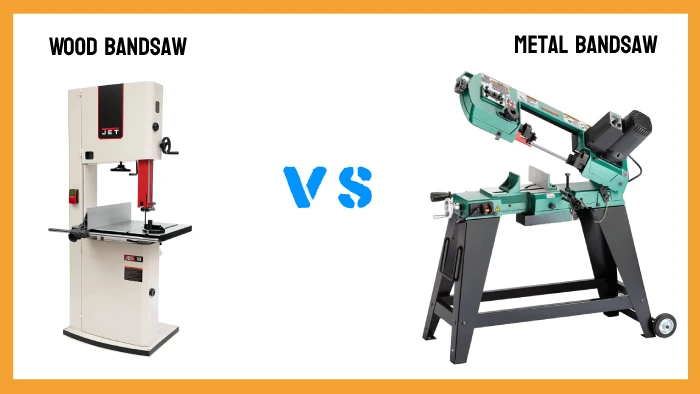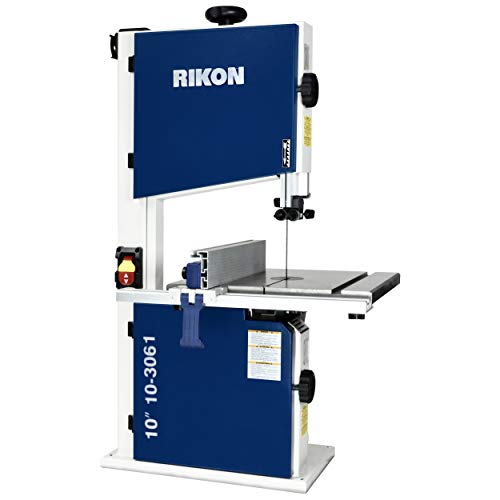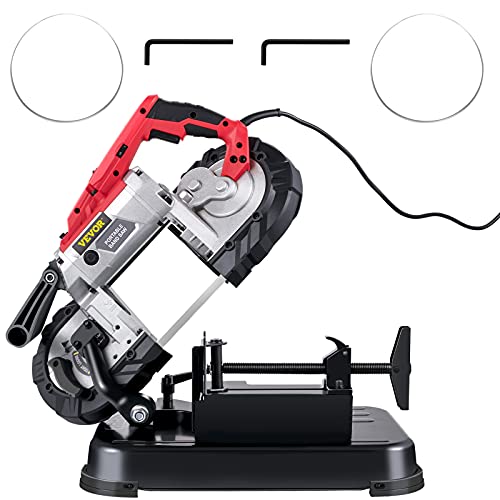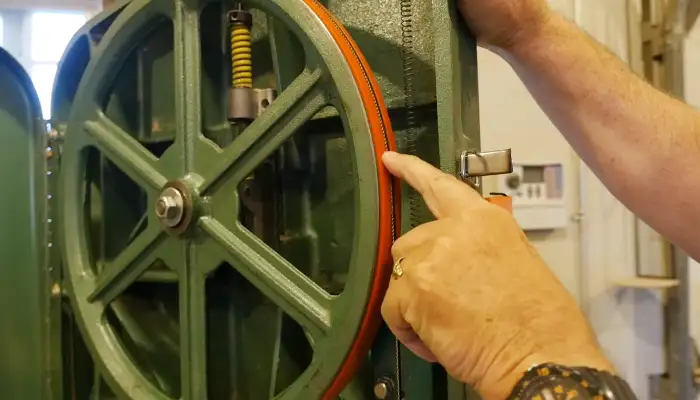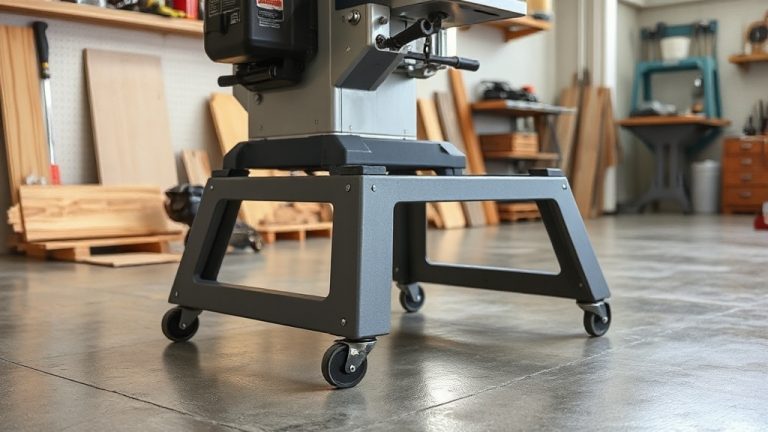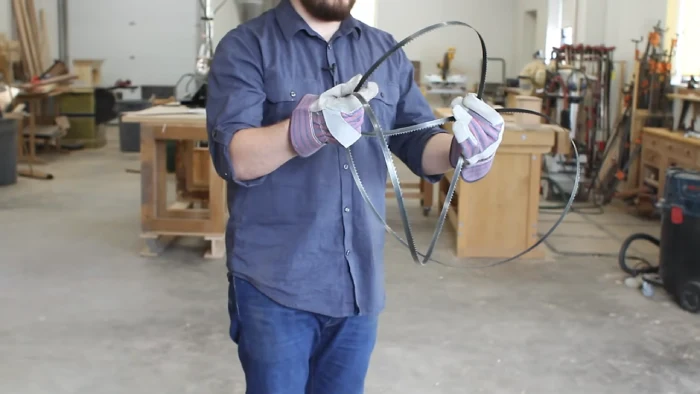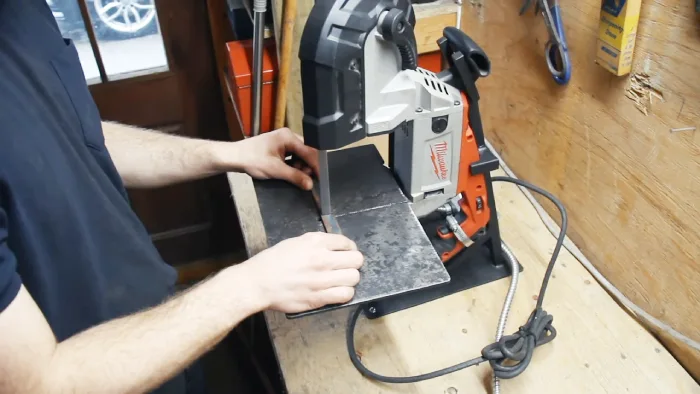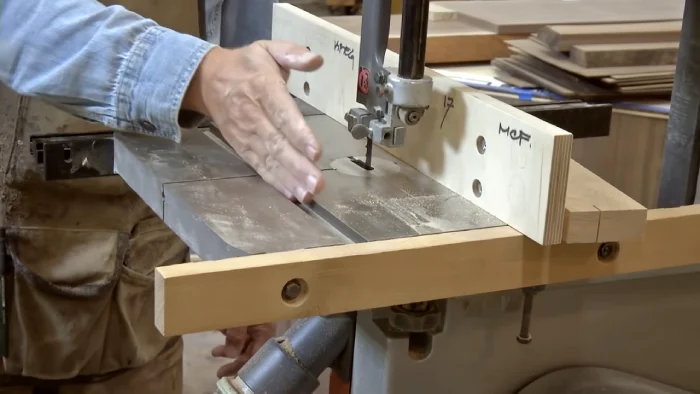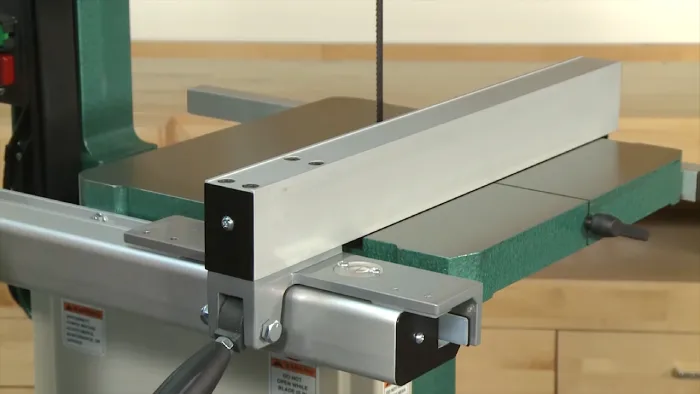Wood vs Metal Bandsaw: 7 Key Differences
A bandsaw is a powerful cutting tool that can make precise and efficient cuts on different materials like wood and metal. However, cutting through these materials requires different types of bandsaws. Wood and metal bandsaws are the two most common types used in various woodworking and metalworking projects.
Although they may appear similar, there are significant differences between wood and metal bandsaws based on the research I conducted. One of the things that caught my attention is their blade size and tooth configuration.
Wood bandsaws typically have wider blades and optimized tooth configurations that are ideal for producing smooth cuts in all types of wood. Meanwhile, metal bandsaws require narrower blades and teeth designed to handle the challenges of cutting through tough metals.
I will discuss the major differences between wood and metal bandsaws, highlighting their specific requirements for efficient cutting.
- Dual Blade Speeds for Versatility
- Large Cutting Capacity for Size
- Adjustable Table with Tilt Feature
- Sturdy Cam-Lock Fence System
- Efficient Dust Port for Cleanliness
- Lightweight design for easy maneuverability
- One-handed and overhead cutting capabilities
- Variable speed adjustment for versatile applications
- Integrated guard and metal latch for safety
- LANYARD READY compatibility for added convenience
Wood vs Metal Bandsaw: 7 Differences You Need to Know
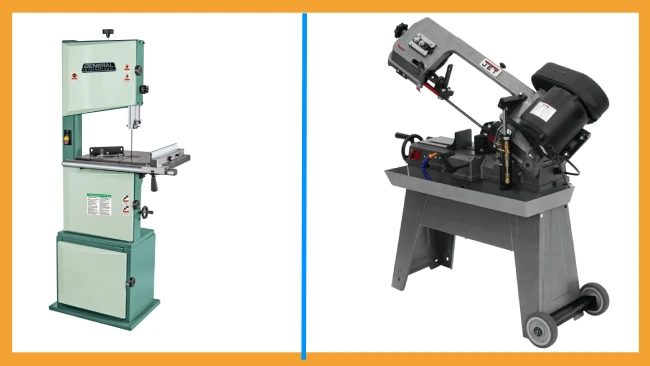
In my examination of wood vs metal bandsaws, I’ve highlighted seven differences to help you decide which is right for you.
- Blade size and tooth configuration
- Blade speed
- Cutting capacity
- Drive wheels
- Coolant and lubrication
- Construction and robustness
- Dust and chip collection
1. Blade Size and Tooth Configuration
In terms of size, wood bandsaw blades tend to be wider than metal bandsaw blades. This is because wood cutting requires a larger cutting surface to remove material efficiently.
On the other hand, metal bandsaw blades are narrower to allow for more precise cuts in metal materials.
Moving on to tooth configuration, I discovered that woodworking bandsaw blades offer three types of tooth configurations: regular, skip, and hook. Regular tooth blades with higher TPI (teeth per inch) are suitable for producing smoother cuts in all wood types.
On the other hand, metal bandsaw blades employ tooth designs specifically engineered to handle the challenges of cutting through metal, such as heat generation.
2. Blade Speed
I noticed a significant difference in blade speed between wood and metal bandsaws. Wood bandsaws typically operate at higher speeds compared to metal bandsaws. This is because wood is a softer material and can be cut efficiently at higher speeds without generating excessive heat.
Conversely, metal bandsaws operate at slower speeds due to the denser and tougher nature of metal. These slower speeds help to reduce heat generation during the cutting process, preventing the blade from becoming dull or damaged.
Additionally, slower speeds allow for more control and precision when cutting through metal materials.
3. Cutting Capacity
Wood bandsaws are often designed with larger cutting capacities to accommodate larger pieces of wood. Wood is generally less dense than metal, allowing for faster cutting speeds and larger workpieces.
Conversely, metal bandsaws may have slightly smaller cutting capacities. This is due to the denser nature of metal workpieces, which require slower cutting speeds to ensure accurate and precise cuts.
While both wood and metal bandsaws can cut various materials, the difference in cutting capacity highlights the specific needs and requirements of each type of bandsaw for different applications.
4. Drive Wheels
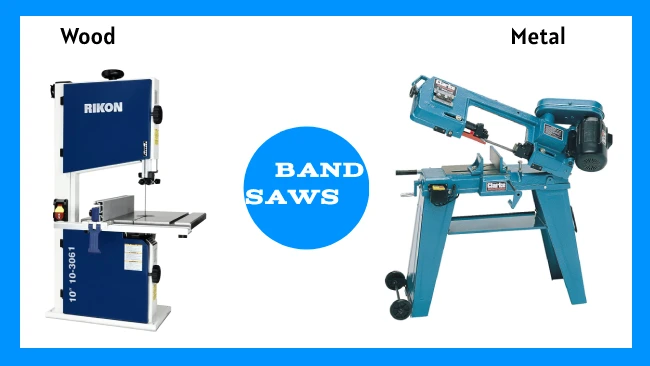
According to my findings on wood bandsaws, I have noticed that rubber bands are extensively used but wear out quite quickly, thus requiring frequent maintenance. On the other hand, after my research on metal bandsaws, I have found that their all-metal drive wheels offer excellent durability and stability during metal cutting.
My attention was drawn to the superior quality of cuts produced by metal bandsaws due to their all-metal design. It prevents the band from flexing and twisting, making it suitable for tight precision cuts.
5. Coolant and Lubrication
In my research, I’ve discovered that metal bandsaws require coolant and lubrication systems during cutting to prevent dulling and ensure the quality of the metal product.
It caught my attention that metal bandsaw coolant systems spray liquid coolant onto the blade and workpiece during cutting, dissipating heat and reducing friction. This prevents the blade from overheating and extends its lifespan while flushing away metal chips and debris, ensuring a clean cutting area and minimal blade damage.
Conversely, wood bandsaws do not require coolant but rather lubricants to reduce friction during extended cutting periods, thus extending the blade’s life. The proper use of coolant and lubrication systems in bandsaws is essential for ensuring optimal performance and product quality.
6. Construction and Robustness
Wood bandsaws are designed specifically for woodworking applications and may have a less robust construction compared to metal bandsaws. This is because wood is generally a softer and less dense material than metal, so a wood bandsaw doesn’t need to withstand the same level of cutting force and pressure.
On the other hand, metal bandsaws are constructed with a robust design to handle the challenges of cutting denser and tougher metal materials. They’re typically made with heavier frames, sturdier components, and stronger motors to ensure durability and reliability during metal-cutting operations.
The construction and robustness of a bandsaw play a crucial role in its performance and longevity, so it’s essential to choose the appropriate type depending on your specific cutting needs.
7. Dust and Chip Collection
Wood bandsaws typically come equipped with dust collection systems to manage the wood dust and chips generated during cutting. These systems are designed to efficiently capture and contain the fine particles that can be hazardous to health and cause a messy work environment.
When making intricate cuts on a bandsaw, the dust collection system plays a crucial role in maintaining a clean workspace. It helps in the efficient removal of sawdust, providing better visibility of the cutting area and reducing the risk of respiratory issues associated with prolonged exposure to wood dust.
On the other hand, metal bandsaws primarily focus on managing metal chips rather than dust. Due to the nature of metal cutting, some models may not have elaborate dust collection systems. Instead, they may rely on chip brushes or trays to collect the metal chips, which can be larger and heavier compared to wood dust.
Chart Comparing Wood and Metal Bandsaws
| Aspects | Wood Bandsaw | Metal Bandsaw |
| Blade Size and Tooth Configuration | Various sizes, wider, optimized tooth configurations (regular, skip, hook) | Narrower blades, teeth designed for metal, high-strength steel blades |
| Blade Speed | Higher speeds for efficient wood cutting | Slower speeds for handling dense and tough metal materials |
| Cutting Capacity | Larger cutting capacities for wood | Slightly smaller capacities for metal due to slower cutting speeds |
| Drive Wheels | May have rubber bands, requiring maintenance | Equipped with all-metal drive wheels for durability during metal cutting |
| Coolant and Lubrication | Generally not equipped for coolant or lubrication | Rigged for coolant systems to manage heat during metal cutting |
| Construction and Robustness | Constructed for woodworking, less robust | Robust construction to handle denser and tougher metal materials |
| Dust and Chip Collection | Equipped with dust collection systems | Focuses on managing metal chips, may not have elaborate dust collection systems |
Can I convert my wood bandsaw for metal cutting?
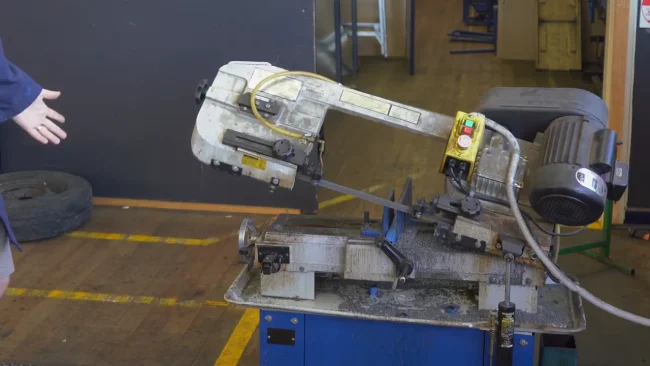
You can convert your wood bandsaw for metal cutting by making the necessary modifications. One highly effective approach is incorporating a 30:1 speed reducer between the motor and band wheel.
You can enhance its metal-cutting capabilities by directly coupling the speed reducer to the bandsaw’s input shaft and driving it with a step pulley. Proper tension on the bandsaw blade is crucial for optimal performance.
Surprisingly, a wood-cutting saw frame can handle metal-cutting tasks effectively, especially when run dry. This modification allows your 14-inch bandsaw to adapt to metal cutting requirements with improved efficiency and precision.
With these modifications, you can transform your wood bandsaw into a versatile tool capable of handling both wood and metal cutting tasks, expanding its usefulness in your workshop.
Which orientation are wood and metal bandsaws available in, vertical or horizontal?
Wood and metal bandsaws are available in either a vertical or horizontal orientation. The vertical setup is commonly used for woodworking tasks, as the blade moves up and down, allowing for versatile cuts and curved shapes. This configuration is ideal for intricate cuts and is favored by woodworkers.
On the other hand, the horizontal configuration is more commonly found in metalworking band saws. With the blade moving horizontally, it excels at straight and precise cuts in larger workpieces. This orientation is preferred for metalworking applications.
When deciding on the orientation of your bandsaw, consider the specific cuts you require and the nature of your projects. Choosing between vertical and horizontal configurations will provide the flexibility to meet your diverse cutting needs.
Choose Wood or Metal Bandsaw Based on Your Specific Needs
The differences between wood and metal bandsaws are evident in their construction, blade type, and cutting capabilities. As I explored these distinctions, it became clear that each type is tailored to its specific domain, offering unique features to enhance efficiency.
Whether it’s the robustness of a metal bandsaw designed for dense materials or the wider blades of a wood bandsaw optimized for intricate woodwork, understanding these differences empowers you to make informed decisions for your cutting tasks.
Additionally, it’s crucial to be mindful of safety to prevent band-saw injuries. Ensuring proper usage, maintenance, and following safety guidelines can significantly reduce the risk of accidents in the workshop.
So, as you navigate your workshop, consider the nuanced characteristics of wood and metal bandsaws to ensure precision and effectiveness in your projects.
- High-Speed Induction Motor
- Multi-Angle Aluminum Table
- Dual Safety Switches
- Efficient Dust Management
- Versatile Blade Compatibility
- Huge Cutting Capacity – 5 Inches
- Powerful Motor – 1100W, 10 Amps
- Ergonomic Design for Accurate Cuts
- Simple Operation with Adjustable Base
- Versatile Use on Various Materials
Last update on 2026-01-08 / Affiliate links / Images from Amazon Product Advertising API

